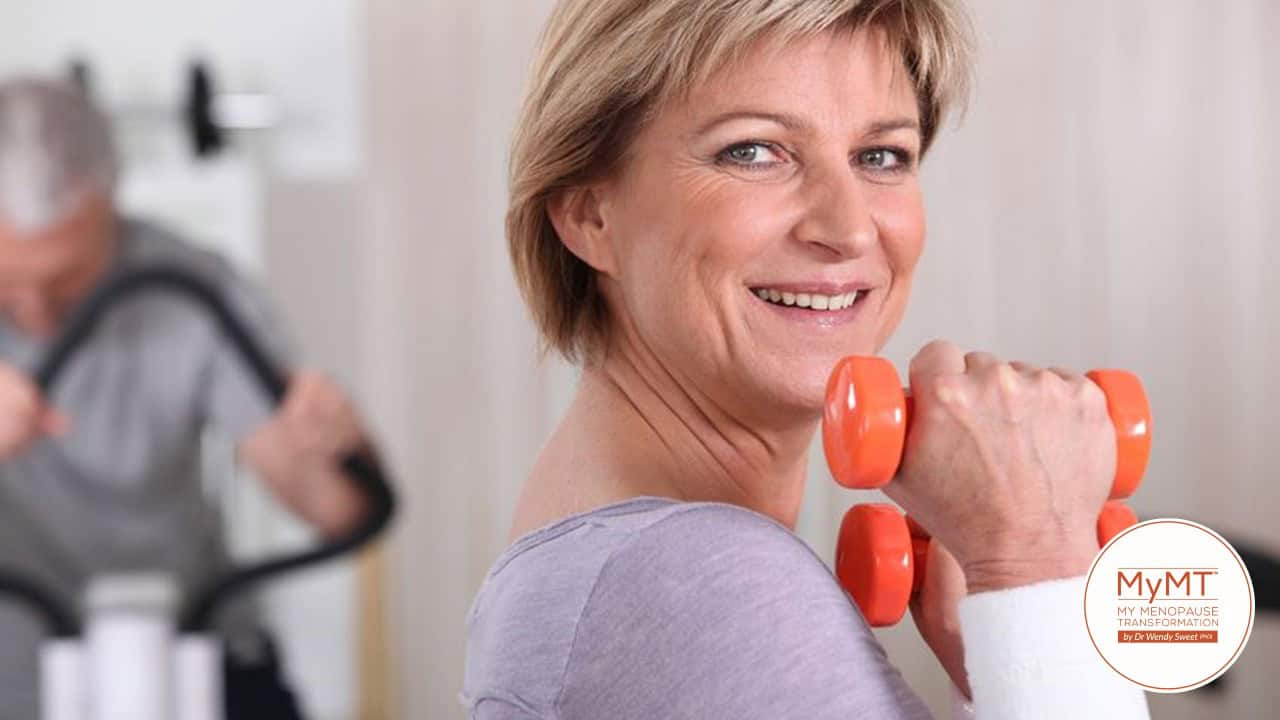My coaching community is full of women enjoying being active again. I say ‘again’ for a reason – so many of them tell me that they have enjoyed activity all their life,but when peri-menopause arrived, aching muscles, insomnia and sore joints, left them unable to do the exercise that they used to do. They are either too exhausted or too sore!
It’s hard to understand why you can’t keep up. That was me a few years ago. Many women don’t know that our muscles change as we move through menopause – and I include our cardiac muscle in this statement too.
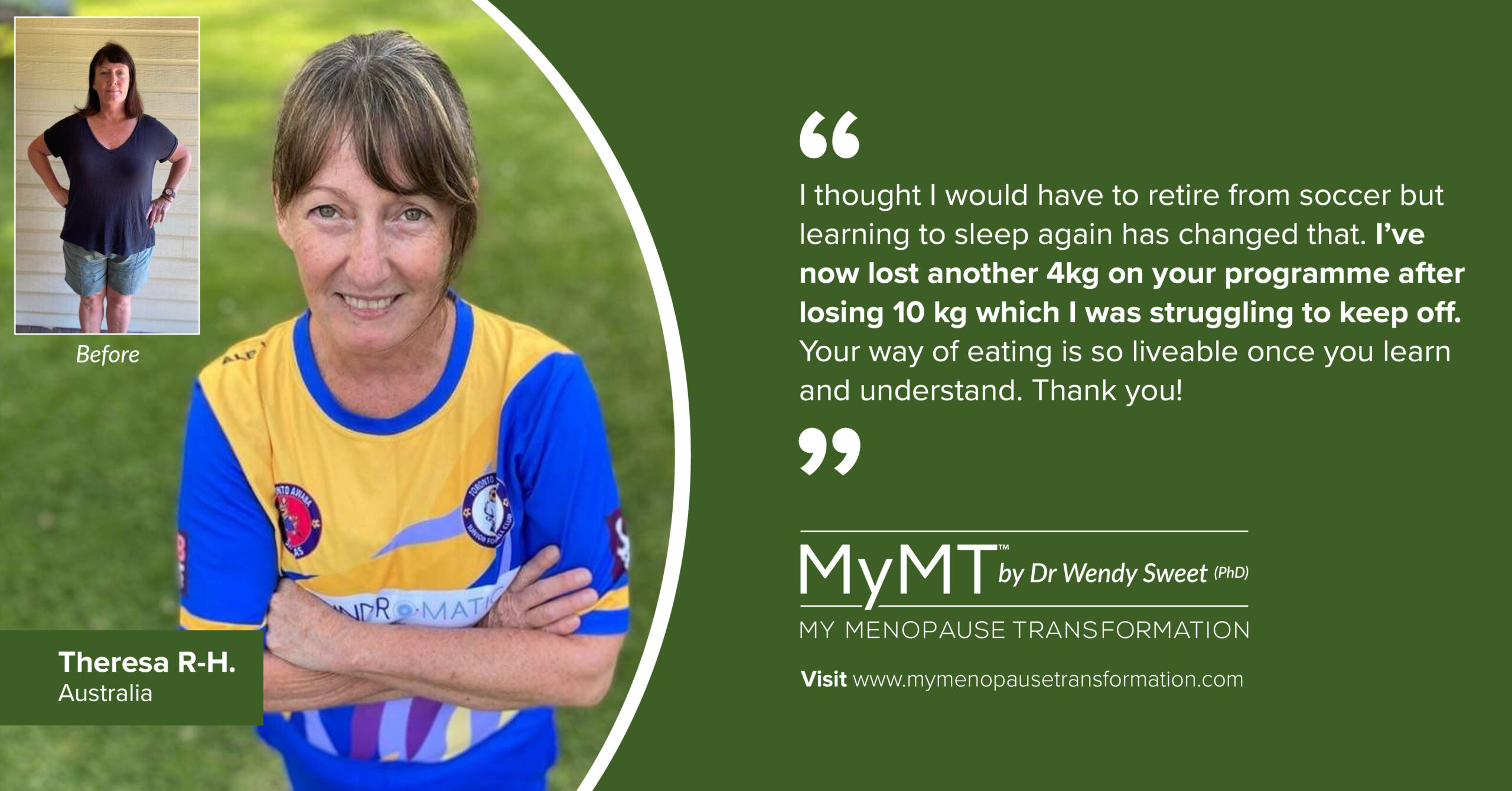
Our Type 2 power fibres decrease in size as oestrogen declines during menopause:
There are numerous changes to our power-fibres in our skeletal muscles as we move into and through menopause. These are our Type-2 muscle fibres – the fibres that enable power, speed and jumping.
As oestrogen levels decline during menopause, Type 2 power and speed muscle fibres diminish the fastest. It’s why many of you see your muscle tone and size decrease with age. For those of you who are skiers, or runners or you like the harder, faster activity in your gym classes, then this may be why your recovery is taking longer, or your legs and muscles ache all the time. This happened to me and numerous fitness instructors who are teaching higher intensity classes and athletes such as Peta below, have reminded me of this too.
It took me a long time to figure out why I wasn’t able to do the harder, more powerful skiing that I used to be able to do. But as soon as I looked at menopause through the lens of our biological ageing, I knew I would find the answer when I better understood what happens to our muscles as we age.
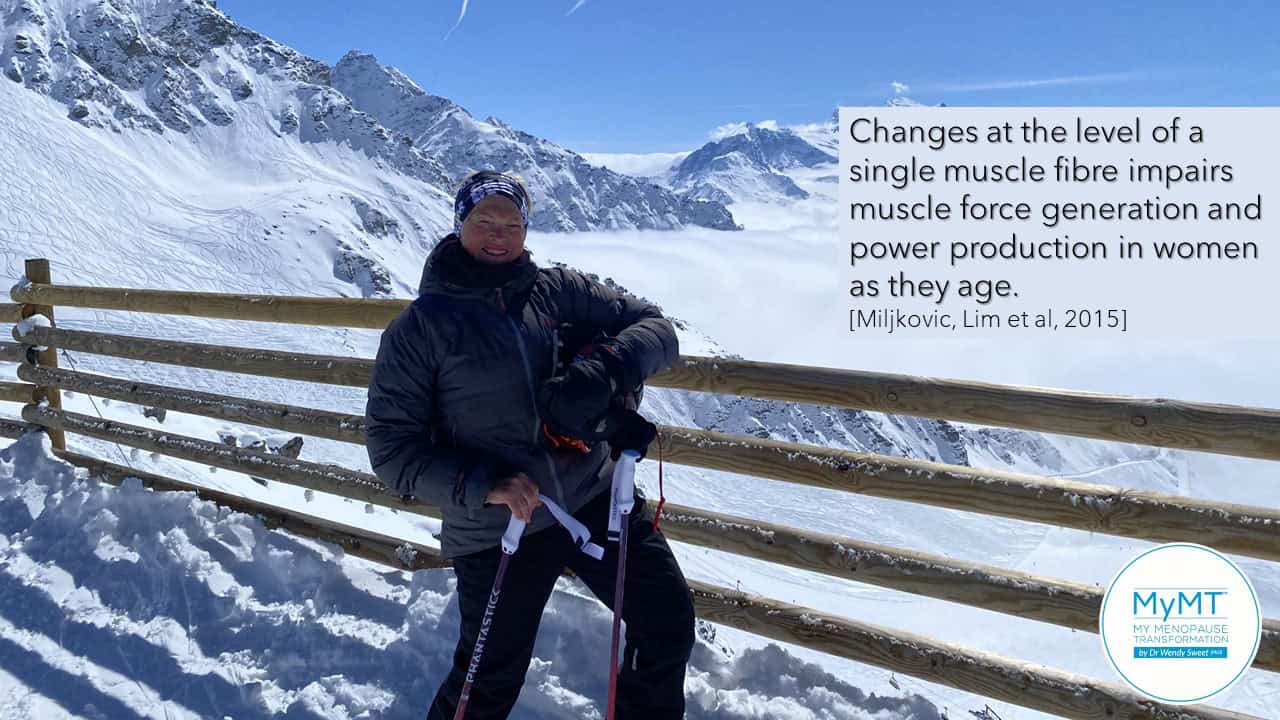
Ageing has become an important topic for scientific research, including muscular and strength research, because life expectancy and the number of men and women in older age groups have increased dramatically in the last century.
Part of the reason for this renewed interest in exercise research in mid-life women is because by 2050, the world’s population over 60 years will double from about 11% to 22%. This means that there will be 2 billion people aged 60 or older living on this planet. Approximately 400 million will be 80 years or older, and over half of them women. Hence, researchers are interested in how both men and women are ageing and because menopause is the start of many of these changes, I believe that understanding how your muscle strength and function change as you age matters.
Whilst a muscle wasting condition called Sarcopenia is partly responsible for the decline in strength as we age it’s not the only thing we need to be aware of.
There are other changes to muscles and as I have discovered with my own exercise, these changes relate to the progressive loss of muscle mass and force-generating capacity of our Type-2 skeletal muscles. As I mention below, these changes then impact our energy levels because of the changes that also occur in our mitochondrial cells.
How this happens is better understood when we look more deeply at the effect of menopause hormonal changes on our muscles. Even if you aren’t an exerciser, or you intend to start, then having some understanding of this is important.
One of the first things to understand is that women’s muscle fibres comprise different ratios of fibres compared to males.
Muscles comprise two general types of fibres – slow twitch and fast twitch. Slow twitch fibres are our endurance fibres and are known in muscle physiology terminology as ‘Type 1’ fibres. Fast twitch fibres are our power and speed fibres and these are known as ‘Type 2’ fibres.
Declining levels of oestrogen means that we lose Type-2 muscle power fibres faster than Type-1 endurance fibres.
It’s why many of us lose our ability to jump and turn as quickly as we used to. Especially those of you who are skiers or who enjoy your sports or fitness activities which involve faster movements, jumping, turning or sprint-like movements. It’s why, when you do the wrong exercise during menopause, it may also make many of your symptoms worse.
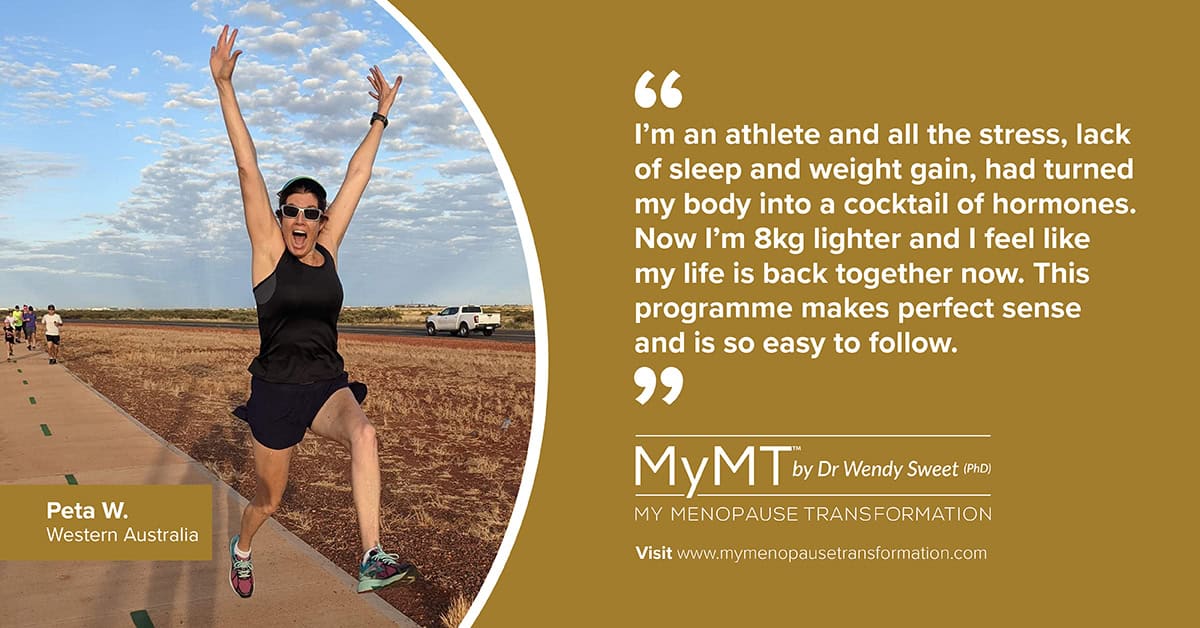
As we transition through menopause and we biologically age and go into our next life-stage. This generally results in a 30-40% decline in muscle fibre number and size. I think many of us notice the loss of tone don’t we?
For women used to being active, this is important to note because this reduction in muscle fibre number and size is fibre type specific.
We can lose anywhere between 10%–40% of our smaller Type-2 fibres and as I said earlier, this loss in these fibres, means that we also lose our power and speed fibres more than the Type 1 fibres that help us with our stamina and endurance.
It’s possibly the reason that many physical activity studies looking at older women’s exercise participation reports that walking (not running, jumping or sprinting) is the most popular activity as they age.
But as sore joints and fatigue arrive during menopause and if women are doing the wrong type of exercise and not sleeping, it’s easy to drop-out of staying active. The couch and a glass of wine appeals more than pulling on the running shoes … yes, I’ve been there too.
It’s why I wasn’t surprised to hear the words of Australian Physical Activity Researcher, Professor Wendy Brown, report on the Australian Longitudinal Women’s Health Studies a few years ago, that women in their 50’s are the highest cohort to drop out of activity as they age. And lack of energy, lack of time and lack of motivation are often cited as reasons to their decreasing participation. [Women’s Midlife Health, 2015]
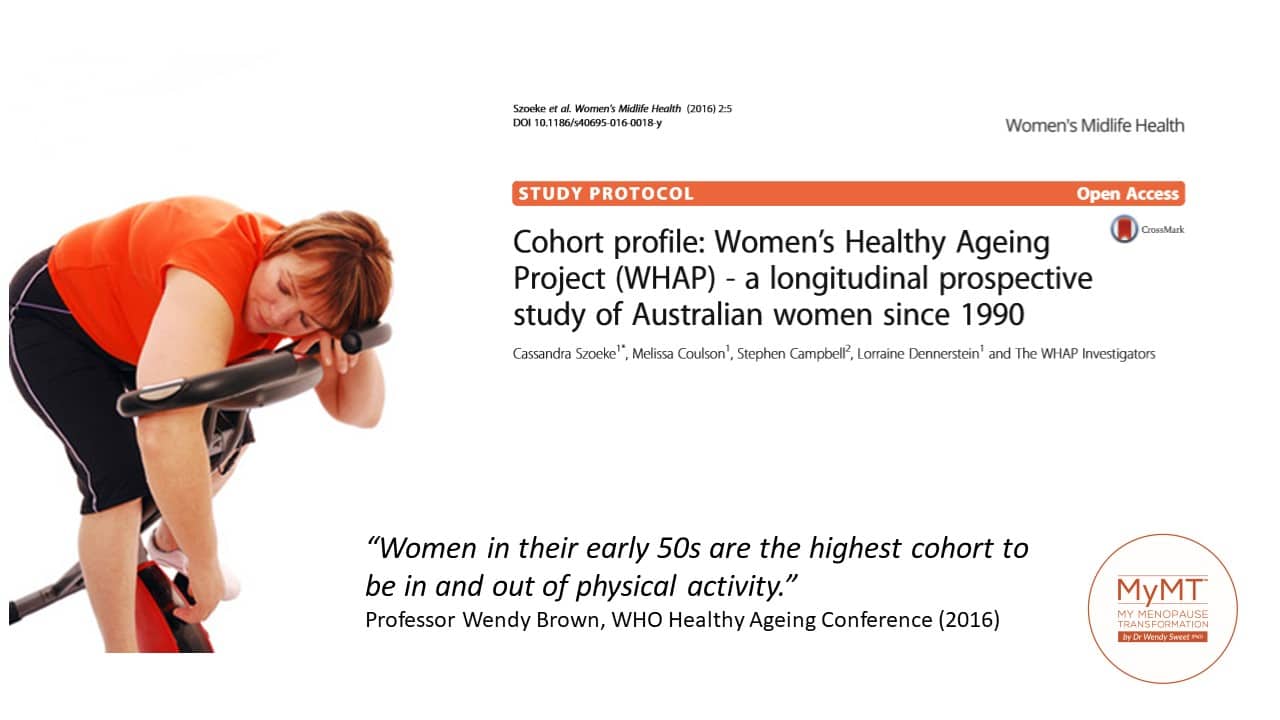
But there’s more to understand about our muscle function as we go through menopause too. And it’s to do with our beautiful mitochondria.
I talk a lot about mitochondria in my 12 week Re-Build My Fitness programme. Mitochondria are so important to preserve as we get older.
Mitochondria are the small organelles that sit within muscle fibres where oxygen is stored. They are the site where fats are burned and our energy (ATP) is made. So, for those of you who are wanting to return to levels of fitness or physical activity that enable you to enjoy an enhanced and functional ageing, or you need to boost your metabolism and lose weight, then you need to also boost the function of your mitochondrial cells.
Looking after our mighty Mitochondria matters as we move through menopause. Not only is this important for our weight loss, but also for our energy levels and our fitness. In my 12 week weight loss programme, I have a module called ‘Fitness Foundations‘ – this teaches women how to improve their aerobic exercise as they are going through menopause. Alongside sorting out sleep and any sore joints, it’s an important solution for improving energy, weight loss and setting up a great foundation for their cardiovascular health as they move into post-menopause.
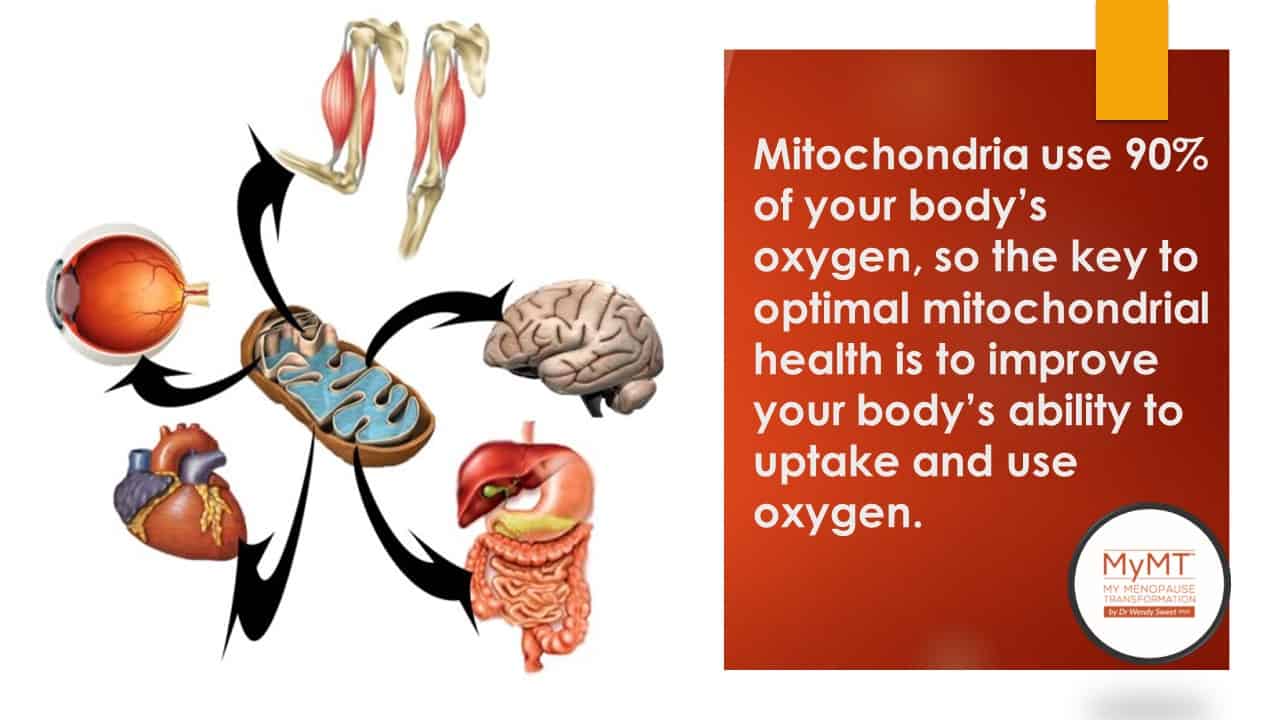
Researchers are finding that when it comes to our metabolism, energy production, immune health repair and regeneration, our tiny mitochondria matter.
However, the problem is, that menopause hormonal and metabolic changes mean that we also lose some muscle tone and function as I mentioned earlier. With some decline of muscle mass, (even with weight training) we also lose our powerful little mitochondria. It’s no wonder, millions of women end up with immune health and fatigue concerns as they age.
The natural death of our mitochondria has been postulated as one of the mechanisms associated with muscle fibre loss with ageing.
As such, we need to do our best to help boost mitochondrial size, density and amount. Can we do this as we get older and slow down the rate of mitochondrial loss and muscle weakness? Well, yes we can.
One way to achieve this, is to focus on aerobic exercise and if you aren’t a natural exerciser, then working on your motivation for exercise is an important strategy for you.
A lack of exercise decreases the efficiency and number of mitochondria in skeletal muscle, while exercise promotes mitochondrial health. So, if you want to retain some of your power and strength fibres (Type-2 fibres) as well as improve your Type 1 endurance fibres, then a combination of aerobic endurance and a progression towards learning basic strength/ resistance exercises is another goal for you.
Mixing up the variety of exercise that you do is also important as we get older. This is because different types of exercise can trigger variable but specific responses in the muscle. For example, the most important activity to do for improving mitochondrial function is actually steady-state aerobic exercise. This is also important for fat-burning.
Steady-state aerobic exercise is the type of exercise which you can do rhythmically for 30-60 minutes.
Strength training is also important as we age and is important for building or retaining the muscle that you do have. Then, once you are sleeping and have restored your energy levels and any sore joints, adding a little bit of slightly higher intensity interval training [HIIT] within aerobic exercises such as cycling and walking also has a positive effect at the cellular level at combating age-related muscle loss and weakness.
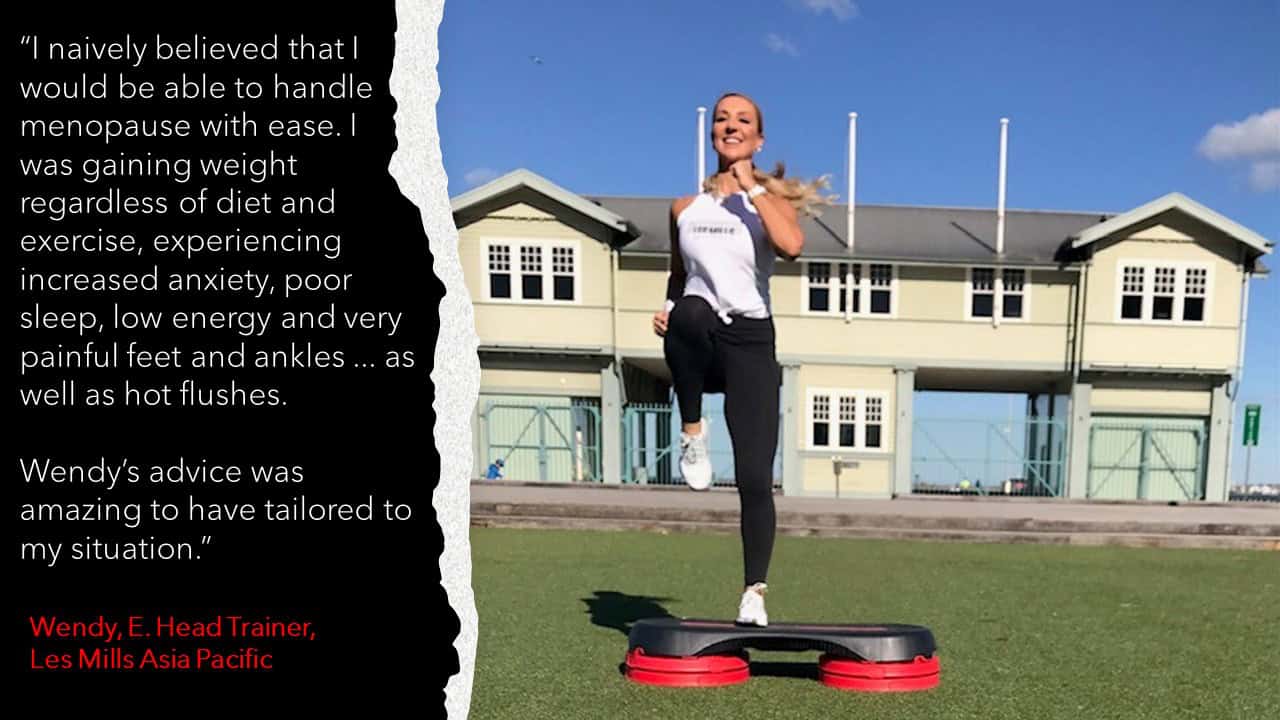
For those of you who haven’t had the time or motivation to remain active during menopause, then making some plans to slowly get back into exercise has an incredible influence on muscle health as you get older.
Not only does exercise improve the number and size of mitochondria in skeletal muscle, but exercise also improves nerve transmission and the exchange of calcium between nerves and muscles.
I find that numerous women who join me on my programmes, whether they are regular exercisers or not, don’t know that calcium is a really important mineral as we get older … and I don’t just mean for our bones!
Calcium helps nerves to ‘jump’ their messages across into muscles and this helps to improve our muscle speed, strength, balance and reaction time. All important functions of muscles as we get older. I have a specific emphasis on calcium in my nutritional information for women on the MyMT™ programmes – it matters not only for bone health, but optimal calcium levels are crucial for our muscles to contract effectively.
I hope you now better understand that muscle quality matters in menopause, so too does the type of exercise that you do. Numerous women are doing too much when they aren’t sleeping and therefore, can tip into over-training syndrome.
Conversely, others of you might not be doing enough exercise – this can be problematic too. However, both extremes affect your mitochondria because during our menopause transition, oestrogens affect mitochondria through multiple processes involving muscle membranes.
Moreover, oestrogen receptors have been identified within mitochondria and play a role in facilitating calcium retention in muscles (Ventura-Clapier et al., 2019). This is why for those of you doing lots of exercise or if you are leaner and thinner, you might want to discuss HRT with your Doctor. And whether you are an exerciser or not, then if you aren’t recovering from exercise or you have restless leg syndrome, then think about your calcium intake and have your Vitamin D levels checked too. As I’ve mentioned in numerous articles, Vitamin D helps in the absorption of calcium in the body.
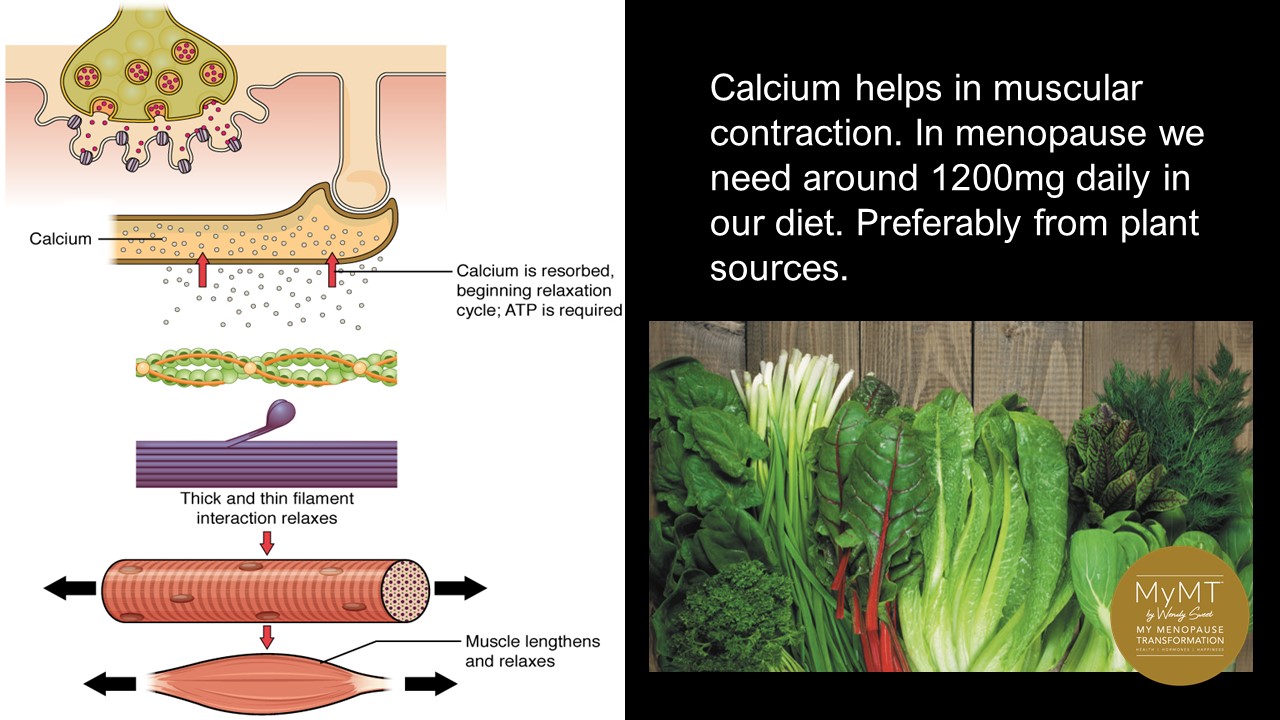
Age-related muscle loss and weakness is a combination of numerous factors, but more and more research is showing that muscle and mitochondria can be re-trained and retained through exercise. Active elderly people have more of these mitochondrial cells than more-sedentary individuals do. This is also the reason why exercise prior to hip and knee surgery can speed up recovery in the elderly too.
The good news for women is that exercise can stave off and even reverse muscle loss and weakness with age. Staying active or renewing activity in a progressive way, can promote mitochondrial health, increase protein turnover in muscles, thus aiding repair, and restore nerve signaling involved in muscle contraction and function.
And for those of you who don’t have the time to exercise, you don’t need to do as much as what was once thought – 30-60 minutes around 4 times a week is enough to help you age well, either all at once, or in ‘snack-tivity’ throughout the day.
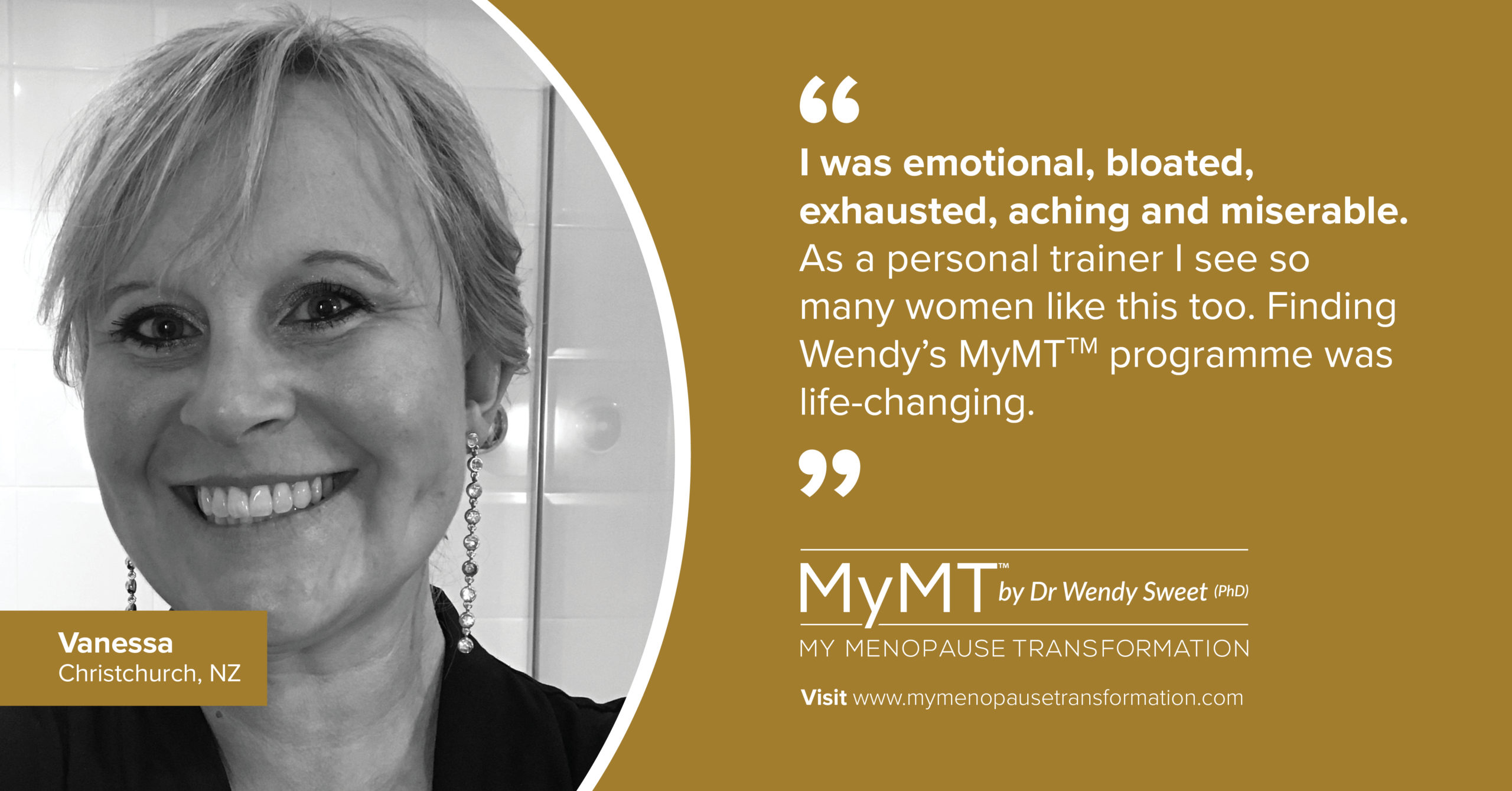
References:
Bellanti F, Lo Buglio A, Vendemiale G. (2021). Mitochondrial Impairment in Sarcopenia. Biology (Basel). 10(1):31. doi: 10.3390/biology10010031.
Brunner, F., Schmidt et.al. (2007). Effects of aging on Type II muscle fibers: a systematic review of the literature. Journal of Ageing & Physical Activity, July;15(3):336-48.
Butler-Browne, G., Mouly V., et al, (2018). How Muscles Age, and How Exercise Can Slow It. The Scientist Online Edition.
Hansen, M. (2018). Female hormones: Do they influence muscle and tendon protein metabolism? Proceedings of the Nutrition Society, 77(1), 32-41. doi:10.1017/S0029665117001951
Pierre, T. & Pizzo, P. (2018). The Ageing Mitochondria, Genes, 9, 22; doi:10.3390/genes9010022
Sorriento D., Di Vaia E., Iaccarino G. (2021). Physical Exercise: A Novel Tool to Protect Mitochondrial Health. Frontiers in Physiology, 12.
Tanaka, H. (2019). Antiaging Effects of Aerobic Exercise on Systemic Arteries. Hypertension. 74:237–243
Ventura-Clapier, R., Piquereau, J., Veksler, V., & Garnier, A. (2019). Estrogens, Estrogen Receptors Effects on Cardiac and Skeletal Muscle Mitochondria. Frontiers in endocrinology, 10, 557. https://doi.org/10.3389/fendo.2019.00557
